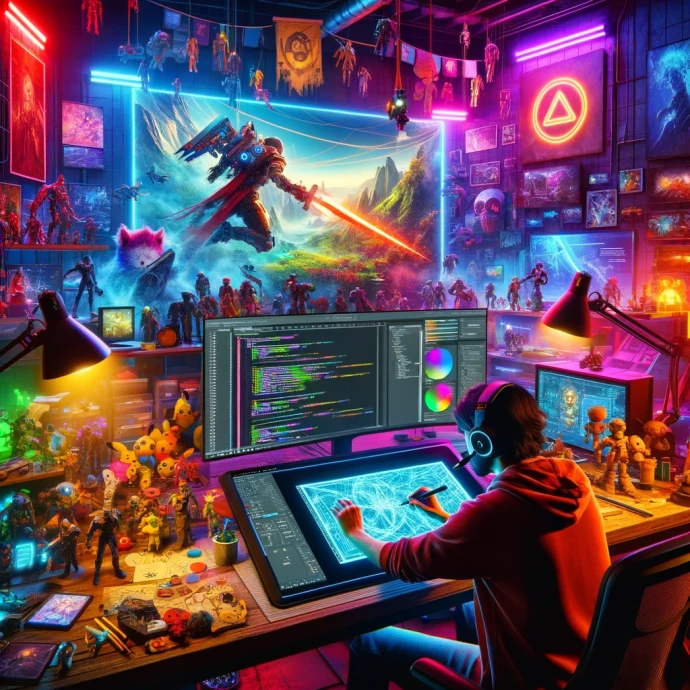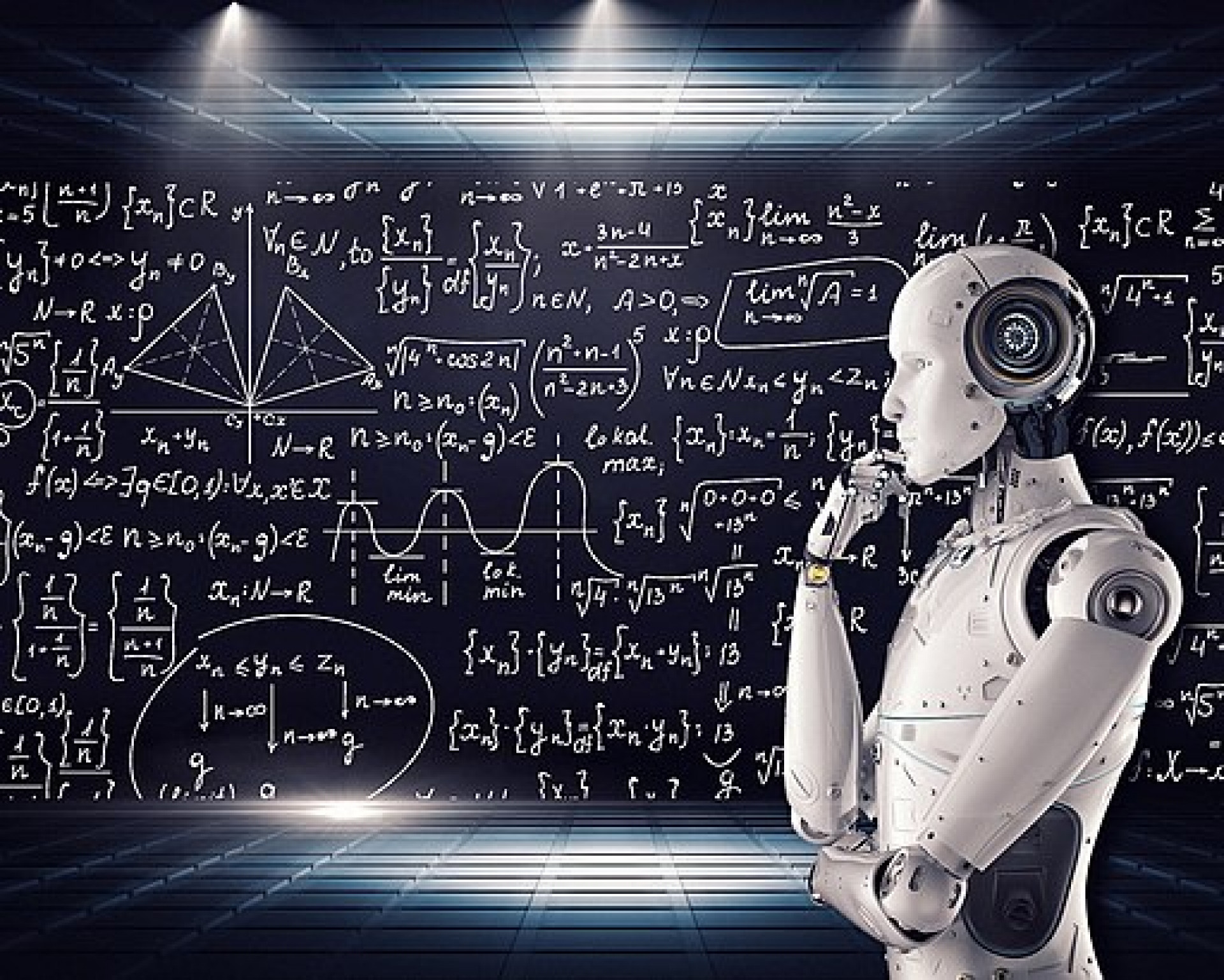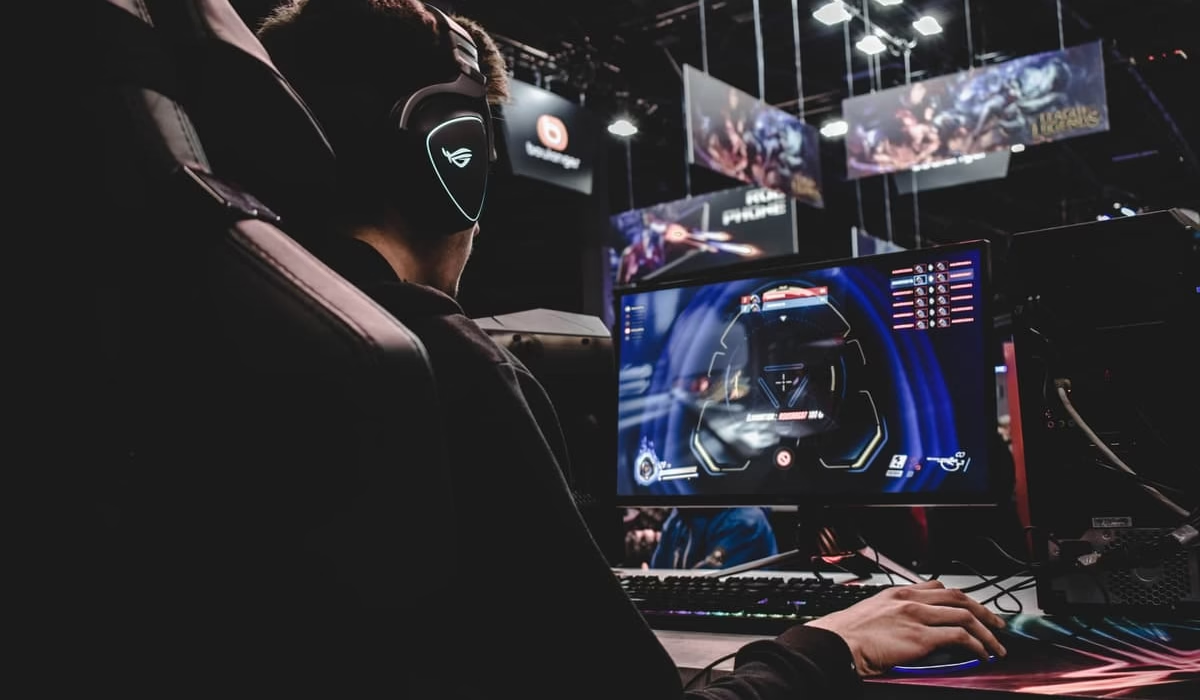Breakthrough AI Game Development: Revolutionizing the Future of Gaming
Estimated reading time: 12 minutes
Key Takeaways
- Breakthrough AI Game Development involves using sophisticated AI to fundamentally change how games are created and experienced, tackling long-standing issues like static worlds and repetitive tasks.
- By 2025, analysts predict over 60% of game studios will integrate AI tools, aiming to cut production times by up to 40% through automation of tasks like level design, asset creation, and bug testing.
- Key technologies include Generative AI (creating environments, assets, code) and Reinforcement Learning (training smarter, adaptive NPCs).
- AI-Generated Game Environments and Procedural Content Generation (PCG) enable vast, dynamic, and personalized worlds, exemplified by games like *No Man’s Sky* and *Minecraft*.
- AI-Powered Game NPCs are moving beyond simple scripts, utilizing machine learning for more realistic behaviour, unscripted dialogue, and emotional responses.
- AI-Enhanced Graphics techniques like NVIDIA DLSS and AMD FSR use AI to upscale resolution and improve performance, delivering higher fidelity visuals without demanding excessive hardware power.
- The synergy of these AI technologies promises truly “living worlds” that adapt and evolve in real-time based on player actions.
- Ethical considerations, including potential job displacement for roles like QA testers and junior artists, creative homogenization, and data privacy, must be carefully managed.
- Future trends point towards hyper-personalization, AI acting as co-developers, increased reliance on cloud AI, and deeper integration with VR/AR for unparalleled immersion.
Table of Contents
- Breakthrough AI Game Development: Revolutionizing the Future of Gaming
- Key Takeaways
- Understanding Breakthrough AI Game Development
- Generative AI and Reinforcement Learning: The Core Engines
- Real-World Impact: Speed, Retention, and Cost
- AI-Generated Game Environments: Crafting Dynamic Worlds
- How AI Builds Worlds: Beyond Randomness
- Benefits: Scalability and Deep Personalization
- Procedural Content Generation: Beyond Randomness
- Intelligent Creation: Structure and Meaning
- AI Ensures Coherence and Quality
- AI-Powered Game NPCs: Smarter, More Lifelike Characters
- Beyond Scripted Responses: Machine Learning in Action
- Emotional Depth and Memory
- AI-Enhanced Graphics: Pushing Visual Boundaries
- AI Upscaling and Performance Boosts
- Real-Time Rendering and Intelligent Animation
- The Synergy of AI Technologies in Game Creation
- Creating Living, Breathing Worlds
- Ethical and Creative Considerations
- Job Market Shifts and New Roles
- Creativity vs. Homogenization
- Data Privacy and Algorithmic Bias
- Future Trends in AI-Driven Game Development
- Hyper-Personalization and Adaptive Narratives
- AI Co-Developers and Development Democratization
- Cloud-Based AI and Immersive Technologies
- Frequently Asked Questions (FAQ)
The video game industry, a titan of entertainment, stands at the precipice of a profound transformation. Driven by relentless advancements in artificial intelligence, we are witnessing a seismic shift in how games are conceived, developed, and experienced. Forget incremental improvements; we’re talking about a fundamental re-imagining powered by intelligent algorithms. Industry forecasts are striking: by 2025, a significant majority—over 60% of game studios globally—are expected to employ AI tools to streamline complex processes like level design, character animation, and even narrative generation. The projected impact? Slashing notoriously long production timelines by as much as 40%. This isn’t science fiction; this is breakthrough AI game development unfolding *now*.

We see its power in flagship titles and innovative experiments. Consider Sony’s remarkable adaptive racing AI, *Gran Turismo Sophy 2.0*, which learns from human players to provide challenging yet fair competition. Or look at the boundless universe of *No Man’s Sky*, where AI algorithms procedurally generate entire galaxies, offering literally quintillions of unique planets to explore. These aren’t isolated examples but harbingers of a new era. Advanced algorithms are poised to amplify human creativity, boost development efficiency to unprecedented levels, and deepen player immersion in ways previously thought impossible. Join us as we delve into the core technologies: AI-generated environments, smarter non-player characters (NPCs), stunning AI-enhanced graphics, and the ethical tapestry woven through this revolution. The future of gaming is being crafted, one algorithm at a time.
Understanding Breakthrough AI Game Development
So, what exactly defines breakthrough AI game development? It’s not merely about using standard AI techniques like pathfinding (A* algorithms) that have been staples for decades. Instead, it signifies the application of cutting-edge AI – primarily machine learning, deep learning, and generative models – to address and overcome fundamental, long-standing challenges within the game development pipeline and the player experience itself. Think about the limitations that have often defined digital worlds:
- Static, manually crafted environments: Beautiful but often predictable and finite.
- Repetitive, time-consuming tasks: Asset creation, bug testing, level balancing – chores that drain resources.
- Lifeless, predictable NPCs: Characters bound by simple scripts, lacking believable reactions or agency.
- Performance bottlenecks: The constant struggle between visual fidelity and smooth frame rates.
Breakthrough AI offers potent solutions to these very problems.

Generative AI and Reinforcement Learning: The Core Engines
Two pillars of modern AI are driving much of this innovation:
- Generative AI: This category encompasses AI models trained on vast datasets to *create* new content. In gaming, this translates to:
- Tools like Google DeepMind’s conceptual *Genie 2*, which aims to generate playable 2D platformer levels from simple text prompts (related AI music generation here).
- AI generating realistic textures, 3D models, character animations, dialogue, and even musical scores based on high-level descriptions.

- Systems capable of producing infinite variations of environments or quests, ensuring unique experiences.
- Reinforcement Learning (RL): This involves training AI agents through trial and error, rewarding desired behaviours. Its applications in gaming include:
- Creating NPCs that genuinely learn from player interactions and adapt their strategies, like Sony’s *Gran Turismo Sophy 2.0*, which mastered racing at superhuman levels but can also be tuned to mimic realistic human driving styles and errors.

- Developing sophisticated enemy AI that coordinates tactics and responds dynamically to player actions, moving beyond predictable patterns.
- AI systems that learn to balance game difficulty or manage in-game economies based on observing player behaviour over time.
- Creating NPCs that genuinely learn from player interactions and adapt their strategies, like Sony’s *Gran Turismo Sophy 2.0*, which mastered racing at superhuman levels but can also be tuned to mimic realistic human driving styles and errors.
Real-World Impact: Speed, Retention, and Cost
The adoption of these AI techniques is already yielding tangible results:
- Major studios like Ubisoft leverage AI for automating parts of the quality assurance (QA) process, identifying bugs and performance issues much faster, contributing to reported development cycle accelerations of up to 30% in certain project phases.
- Live-service games such as *Fortnite* utilize AI analytics to understand player behaviour and dynamically adjust challenges, difficulty curves, or event parameters in near real-time, contributing to significant boosts in player retention – sometimes cited around 20% improvements for specific features.
- AI tools for asset generation are reducing the burden on artists for creating variations or filling large game worlds, potentially lowering content creation costs significantly, especially for smaller studios.
AI-Generated Game Environments: Crafting Dynamic Worlds
One of the most visually striking applications of AI in game development is the creation of game environments. Traditionally a painstaking manual process, AI-generated game environments utilize algorithms, particularly procedural generation often guided by machine learning, to construct vast, detailed, and often unique worlds automatically.

How AI Builds Worlds: Beyond Randomness
This isn’t just about scattering objects randomly. Sophisticated AI techniques are employed:
- Procedural Generation Algorithms: Techniques like Perlin noise create natural-looking terrain features (mountains, valleys), while L-systems can generate complex branching structures like trees and river networks.
- Machine Learning Guidance: AI models can be trained on examples of good level design or specific art styles to guide the procedural generation, ensuring the results are not just complex but also aesthetically pleasing and playable.
- Rule-Based Systems: Developers define rules and constraints (e.g., “rivers flow downhill,” “cities need roads,” “deserts shouldn’t border tundras directly”) that the AI must follow, ensuring logical consistency.
Iconic examples demonstrate the power of this approach:
- No Man’s Sky remains a landmark achievement, using procedural generation to create an estimated 18 quintillion unique planets, each with its own theoretically distinct geology, flora, and fauna.
- Minecraft employs procedural generation to create effectively infinite worlds with diverse biomes. More subtly, its AI ensures logical biome placement and adjusts cave generation based on underlying terrain features. Some experimental versions showcase AI adapting biome characteristics based on player actions, like deforestation impacting local climate simulations.
- Upcoming titles are exploring AI to generate not just terrain but entire city layouts, interior building designs, and even atmospheric conditions that change dynamically.
Benefits: Scalability and Deep Personalization
The advantages are transformative:
- Unprecedented Scalability: AI allows developers to create game worlds far larger and more detailed than would be feasible with manual creation alone. Xcube Labs highlights potential labor savings in environment design reaching up to 70%, freeing up human designers to focus on unique landmarks and curated experiences.
- Enhanced Replayability: Procedurally generated worlds ensure that each playthrough can offer a fresh experience, with different layouts, resource distributions, and points of interest.
- Deep Personalization: AI can tailor environments to the player. Imagine RPGs like the anticipated *Dragon Age 4* potentially adjusting not just enemy difficulty but the actual terrain layout or weather patterns based on a player’s skill level or preferred playstyle, creating bespoke challenges.
- Dynamic Worlds: Future systems aim for environments that react and change over time based on player actions or simulated events – forests growing or shrinking, settlements expanding, erosion altering landscapes – creating truly living worlds.
Procedural Content Generation: Beyond Randomness
While closely related to environment generation, Procedural Content Generation (PCG) encompasses a broader scope. Critically, modern AI-driven PCG focuses on creating content that is not just *random* but *structured, meaningful, and coherent* within the game’s context. It’s about using algorithms to intelligently generate various game elements beyond just landscapes.

Intelligent Creation: Structure and Meaning
AI elevates PCG from simple random generation to intelligent creation:
- Asset Generation: AI can generate textures, materials, 3D models, sound effects, and even musical motifs that adhere to a specific artistic style or functional requirement. *Cyberpunk 2077* utilized AI techniques, likely combined with procedural tools, to help create the vast array of detailed textures needed for its dense, neon-drenched urban environment, ensuring visual consistency across Night City.
- Quest and Narrative Elements: AI can generate side quests, character backstories, item descriptions, or dialogue snippets based on predefined templates and lore, adding depth and variety without requiring exhaustive manual writing for every minor detail.
- Level and Dungeon Design: Roguelike games like *Hades* excel here. Its PCG systems construct dungeon layouts, enemy encounters, and reward placements that adapt to player choices, such as the equipped weapon or chosen boons, ensuring varied yet balanced challenges.
AI Ensures Coherence and Quality
The “intelligence” in AI-driven PCG is crucial for maintaining quality and consistency:
- Constraint Management: AI algorithms operate within rules set by designers to ensure generated content makes sense. As mentioned, *Minecraft’s* world generation AI prevents illogical biome pairings like deserts adjacent to snowy regions, maintaining a degree of environmental realism.
- Player Experience Tuning: AI can analyze gameplay data ( K/D ratios, completion times, resource usage) to dynamically adjust PCG parameters. This allows for adaptive difficulty, balanced loot drops, and pacing that responds to the player’s actual behaviour, preventing frustration or boredom.
- Maintaining Artistic Vision: By training AI models on specific art assets or style guides created by human artists, developers can ensure that procedurally generated content seamlessly integrates with the overall aesthetic of the game.
AI-Powered Game NPCs: Smarter, More Lifelike Characters
Non-Player Characters (NPCs) are the inhabitants of game worlds, crucial for storytelling, challenge, and immersion. Traditionally, they’ve been limited by deterministic scripts and simple behaviour trees. AI-powered game NPCs leverage machine learning and other advanced AI techniques to break free from these constraints, enabling more dynamic, believable, and human-like behaviour.

Beyond Scripted Responses: Machine Learning in Action
The leap forward involves several key AI approaches:
- Machine Learning Models: NPCs can be trained using RL to learn complex behaviours like tactical combat coordination, negotiation strategies, or even social interactions by observing player actions or simulated scenarios.
- Natural Language Processing (NLP): Integrating large language models (LLMs) allows NPCs to engage in more natural, unscripted conversations. While still experimental, projects like the modded NPCs in *Skyrim* using ChatGPT (*Origins* mod concept) showcase the potential for dialogue that goes far beyond predefined trees.
- Adaptive AI: NPCs can dynamically adjust their difficulty or tactics based on the player’s performance. Sony’s *Sophy 2.0* AI is a prime example; it can race perfectly but is deliberately tuned to mimic human imperfections and driving styles to create engaging, rather than frustratingly unbeatable, opponents.
- Sophisticated Pathfinding and Awareness: AI enhances NPCs’ ability to navigate complex environments realistically, perceive changes (like sounds or player actions), and react appropriately, making them feel more aware and integrated into the world.
Emotional Depth and Memory
A key frontier is giving NPCs a sense of inner life:
- Simulated Emotions: Future iterations, possibly in titles like the speculative *The Last of Us Part III*, could feature NPCs whose internal “emotional state” (influenced by events, player actions, time of day) affects their dialogue, facial expressions (driven by AI animation rigging), and decision-making.
- Memory and Relationships: Imagine NPCs who remember past interactions. In a hypothetical *Red Dead Redemption 3*, a townsfolk NPC might react warmly if the player previously helped them but become distrustful or even hostile if the player committed crimes in their vicinity, creating lasting consequences for player actions.
- Complex Social Dynamics: AI can simulate group behaviours and social hierarchies within NPC populations, leading to emergent crowd dynamics, faction interactions, and a more believable sense of community within the game world.
AI-Enhanced Graphics: Pushing Visual Boundaries
Achieving cutting-edge visuals often comes at the cost of performance. AI-enhanced graphics techniques offer a powerful way to bridge this gap, using artificial intelligence to improve image quality, boost frame rates, and enable more realistic rendering effects than ever before.
AI Upscaling and Performance Boosts
One of the most impactful uses of AI in graphics is image upscaling:
- DLSS, FSR, XeSS: Technologies like NVIDIA’s Deep Learning Super Sampling (DLSS), AMD’s FidelityFX Super Resolution (FSR), and Intel’s Xe Super Sampling (XeSS) use AI algorithms. They render the game at a lower internal resolution and then intelligently upscale the image to the target resolution (e.g., 1080p to 4K). These AI models are trained to reconstruct detail and maintain sharpness, often looking comparable or even better than native resolution while providing significant performance gains (higher FPS). This allows players with less powerful hardware to enjoy higher resolutions or ray tracing features. Check out offers like NVIDIA’s bundles involving GeForce RTX 40 Series GPUs that heavily leverage DLSS 3.

- Texture and Asset Enhancement: As seen in *Cyberpunk 2077* and other titles, AI can be used during development or runtime to enhance texture quality or upscale older assets without ballooning VRAM usage, maintaining detail while optimizing performance. Standalone tools like *Topaz Gigapixel AI* are also used to upscale textures from older games for remastering projects, intelligently adding detail without introducing artifacts.
Real-Time Rendering and Intelligent Animation
AI’s role extends beyond upscaling:
- Intelligent Rendering Optimization: Game engines like *Unreal Engine 5* utilize systems such as Nanite (virtualized geometry) and Lumen (dynamic global illumination). While not solely AI, these systems incorporate intelligent culling, level-of-detail (LOD) selection, and lighting calculations that rely on predictive algorithms and heuristics, managing immense geometric detail and realistic lighting dynamically. AI-powered denoising is also critical for making real-time ray tracing feasible.
- Faster Rendering Times: By optimizing rendering pipelines and intelligently predicting what needs to be rendered, AI techniques can contribute to reducing rendering times, sometimes by as much as 50% in specific offline rendering scenarios used for cinematics or pre-baked assets, and enabling smoother real-time exploration in computationally heavy open worlds.
- AI-Driven Animation: Techniques like motion matching use AI to select and blend pre-recorded animations dynamically based on player input and game context, resulting in smoother, more responsive character movement. AI can also assist with physics simulations and procedural animation for more realistic secondary motions (cloth, hair).
The Synergy of AI Technologies in Game Creation
The true transformative potential of AI in game development doesn’t lie in using these technologies in isolation, but in their combined power. When AI-driven systems for environment generation, NPC behaviour, graphics rendering, and content creation work together, they can create experiences far greater than the sum of their parts.

Creating Living, Breathing Worlds
Imagine a game world where:
- Environments are dynamically generated using PCG, creating unique landscapes, flora, and fauna (*No Man’s Sky* provides a foundational example).
- AI-powered NPCs inhabit this world, reacting realistically not just to the player but also to the generated environment (e.g., seeking shelter during AI-predicted rainstorms, foraging for procedurally generated resources).
- NPC routines and behaviours are tied to environmental events or emergent situations, as hinted at in *Cyberpunk 2077*’s systems where weather changes could influence crowd density and activity patterns.
- The graphics engine uses AI enhancement (like DLSS/FSR) to render this complex, dynamic world with high fidelity and smooth performance, even on modest hardware.
- Underlying AI systems manage ecological simulations, faction dynamics, and economic models that evolve based on the confluence of player actions and NPC behaviours within the generated world.
This synergy leads towards the industry goal of “living worlds” – persistent, dynamic environments that feel truly alive and responsive. Google Cloud anticipates that by 2026, AI will be instrumental in creating game worlds where ecosystems evolve, economies fluctuate, and societies react in complex ways, potentially even seeing individual plants grow or decay based on simulated environmental factors over time.
Ethical and Creative Considerations
The rapid integration of AI into game development is exciting, but it also raises significant ethical and creative questions that the industry must navigate carefully.
Job Market Shifts and New Roles
- Potential Displacement: Tasks involving repetitive actions or generating variations are prime candidates for AI automation. Roles like QA testers (especially for basic bug hunting), junior environment artists (creating standard assets), or localization testers could see reduced demand. Some analyses suggest automation could impact up to 25% of tasks in certain QA and asset creation roles by 2030.
- Emergence of New Roles: Conversely, AI creates demand for new skills: AI trainers, prompt engineers (crafting effective inputs for generative AI), AI ethicists, data scientists specializing in player behaviour, and developers focused on integrating and customizing AI tools. The focus may shift from manual creation to curation, direction, and integration of AI-generated content.
- Upskilling Imperative: Existing developers will likely need to adapt, learning how to work alongside AI tools effectively, leveraging them to augment their own creativity and productivity.
Creativity vs. Homogenization
- Risk of Generic Content: Over-reliance on AI trained on existing data could lead to games feeling derivative or lacking a unique artistic voice. If everyone uses similar AI tools trained on similar datasets, outputs might converge towards a bland average.
- Maintaining Authorial Intent: Ensuring that AI-generated content aligns with the specific creative vision of the game director and lead artists is crucial. Teams like those potentially working on *The Witcher 4* emphasize that while AI might assist with drafting initial quest outlines or dialogue, human writers and designers remain essential for injecting nuance, polishing content, and ensuring narrative coherence and emotional impact.
- AI as a Tool, Not a Replacement: The healthiest approach seems to be viewing AI as a powerful collaborator or assistant – handling the laborious aspects while humans provide the core creative spark, direction, and final quality control.
Data Privacy and Algorithmic Bias
- Player Data Usage: AI systems that personalize experiences or balance gameplay often rely on analyzing vast amounts of player data. It is paramount that this data is anonymized and used ethically, respecting privacy regulations like GDPR. Transparency about what data is collected and how it’s used is key.
- Potential for Manipulation: Sophisticated AI that profiles players could theoretically be used to optimize monetization strategies in potentially exploitative ways (e.g., identifying players susceptible to certain microtransaction prompts). Ethical guidelines and oversight are needed.
- Algorithmic Bias: AI models are trained on data, and if that data reflects existing societal biases, the AI’s output can perpetuate them. This could manifest as biased NPC behaviours, stereotypical character generation, or skewed world-building elements if not carefully audited and mitigated.
Future Trends in AI-Driven Game Development
The integration of AI in gaming is still in its relatively early stages. Looking ahead, several key trends are poised to further reshape the landscape:
Hyper-Personalization and Adaptive Narratives
- Deeply Tailored Experiences: Going beyond simple difficulty scaling, AI will enable games to adapt core elements to individual playstyles, preferences, and even emotional states (inferred through gameplay patterns). Google Cloud envisions scenarios like a horror game learning what specifically scares a player and dynamically adjusting environments or encounters to maximize tension (more on AI-powered gaming futures).
- Evolving Storylines: AI could allow narratives to branch and change fundamentally based on player choices, leading to truly unique story paths where NPC relationships, world states, and plot outcomes diverge significantly for different players.

AI Co-Developers and Development Democratization
- AI as Creative Partners: AI tools will increasingly function as co-developers. Indie studios are already using models like ChatGPT to brainstorm ideas, generate draft dialogue or code snippets, and automate tedious tasks, reportedly cutting pre-production or prototyping time significantly (e.g., by 40% in some cited cases).
- Lowering Barriers to Entry: Powerful AI tools could make game development more accessible, allowing smaller teams or individuals to create more ambitious projects by automating complex tasks that previously required large teams or specialized expertise.
Cloud-Based AI and Immersive Technologies
- Leveraging Cloud Power: Running sophisticated AI models (especially large generative or RL models) requires significant computational power. Cloud platforms will increasingly host these AI computations, allowing complex AI-driven features to run even on lower-end player hardware via streaming or offloaded processing. Initiatives like Xbox’s Project Moorcroft concept (game demos streamed from the cloud) point towards this direction for AI-heavy experiences.
- Synergy with VR/AR: AI is crucial for unlocking the potential of Virtual and Augmented Reality. It can drive realistic NPC interactions, generate responsive environments, enable intuitive gesture recognition, and optimize rendering for immersive displays, creating truly believable and interactive virtual worlds.
- Advanced Game Testing: AI will move beyond simple bug detection to assist with complex usability testing, game balancing analysis, player experience assessment, and even predicting potential exploits before launch.
Frequently Asked Questions (FAQ)
- Will AI completely replace human game developers?
It’s highly unlikely. While AI will automate certain tasks (like basic asset generation, QA testing, code snippets), it currently lacks the creativity, emotional intelligence, and nuanced understanding required for core game design, compelling storytelling, and unique artistic direction. The future points towards collaboration, with AI as a powerful tool augmenting human developers, not replacing them entirely. Roles will shift, requiring adaptation and upskilling.
- What’s the difference between Procedural Content Generation (PCG) and Generative AI in games?
PCG is the broader concept of using algorithms to create game content automatically (levels, items, etc.). Traditionally, this used handcrafted algorithms. Generative AI is a subset of AI focused on creating *new* data (images, text, code) based on learning from existing data. Modern AI-driven PCG often *uses* Generative AI techniques (like GANs or diffusion models for textures, LLMs for dialogue) alongside traditional algorithms to create more complex, coherent, and higher-quality content.
- Is AI game development mainly for big AAA studios?
Initially, developing bespoke, cutting-edge AI systems was resource-intensive, favouring large studios. However, access to powerful pre-trained models, open-source AI libraries, and cloud-based AI services is rapidly democratizing AI development. Smaller indie studios can now leverage AI tools for tasks like brainstorming, dialogue generation, texture creation, and code assistance, potentially allowing them to create more ambitious games with smaller teams.
- How does AI make games more immersive?
AI enhances immersion in several ways: creating vast, dynamic, and believable worlds that feel less static; powering NPCs that react intelligently and emotionally to the player and the environment; enabling more realistic graphics and physics simulations; and paving the way for personalized experiences where the game world adapts specifically to the player’s actions and preferences.
- Are there major risks or downsides to using AI in games?
Yes. Key concerns include potential job displacement in certain roles, the risk of creating generic or homogenized game experiences if AI is overused without strong human direction, ethical issues surrounding the use of player data for AI training and personalization, and the potential for algorithmic bias to creep into AI systems, leading to unfair or stereotypical representations in games.
- What is Reinforcement Learning (RL) and how is it used for NPCs?
Reinforcement Learning is a type of machine learning where an AI agent learns by performing actions in an environment and receiving rewards or penalties based on the outcomes of those actions. For NPCs, this means an AI character can learn complex behaviours (e.g., combat tactics, driving skills, social interactions) through trial-and-error in simulated gameplay, eventually developing strategies that are more adaptive and effective than pre-scripted ones.
- Can AI help create better game stories?
AI, particularly Large Language Models (LLMs), can assist in storytelling by generating draft dialogue, character backstories, quest descriptions, or even plot outlines based on prompts. This can speed up the writing process and provide inspiration. However, crafting truly compelling, emotionally resonant narratives still relies heavily on human writers for nuance, pacing, thematic depth, and originality. AI is currently more of a writing assistant than a lead author.






